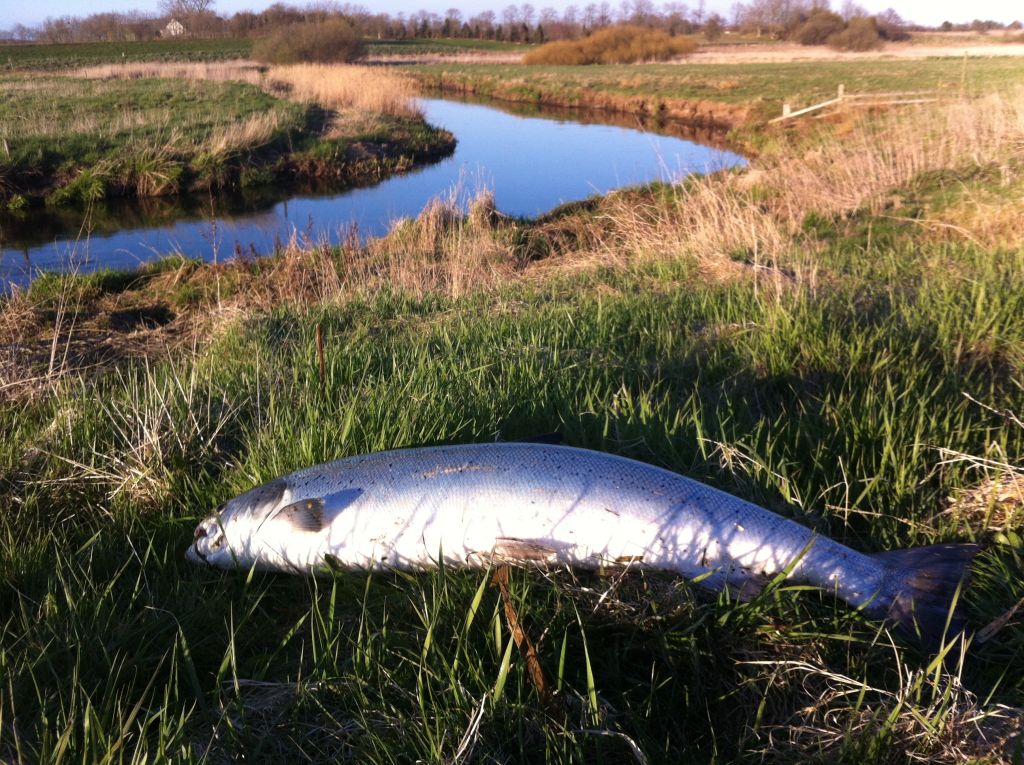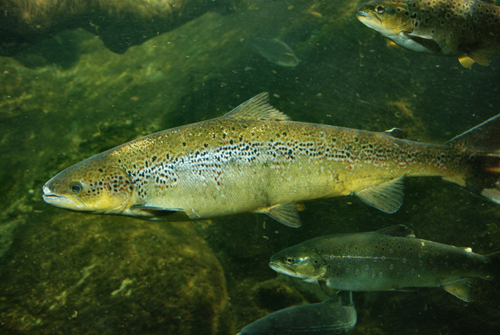Salmon
Salmo salar
Salmon spawn in the period from October to February, depending on the water temperature.
The female fish chooses a stretch with a fast flow and a stony bottom as a spawning ground. She digs a spawning pit here by lying on the side and beating vigorously with her tail fin. This caused the stones and gravel to whirl around, thereby creating an indentation at the bottom - a so-called spawning pit.
When the female is ready to spawn, she positions herself at the bottom of the spawning pit, after which the male comes. While the eggs are being delivered in a long stream, the male delivers his sperm. The fertilized egg settles in the bottom of the spawning pit between the large stones.
Small salmon males, so-called 'sneakers', often succeed in fertilizing the eggs of big salmon females. Once the eggs have been laid, the female beats stone and gravel over the eggs with her tail to cover them up. The eggs hatch in April-May, depending on the water temperature.
Migrate towards the sea
After typically 1-3 years in freshwater, the young salmon migrate towards the sea in the spring months. These salmon are now known as smolts.
When the young salmon become smolts, they are also physically adapted to living in saltwater, and they change colour from multi-coloured to silvery. The smolts develop into shining salmon when they are in the sea.
The salmon from Kongeåen seek feed in the sea around Iceland, Greenland and northern Norway.
Finds its way back to the spawning ground
When the smolt migrates towards the sea, it is imprinted by the stream. This imprinting enables the salmon to later find its way back to the spawning ground in the watercourse where it was hatched.
After 1-4 years in the sea, the salmon migrates up to spawn for the first time. This ability to find its way back to the watercourse is called 'homing'.
The mechanisms responsible for this ability to find its way back to its own watercourse are not known in detail, but there it is generally agreed that it is a complex process in which the fish uses sight, smell and the earth's magnetic fields.
The sense of smell seems to play the greatest role when the salmon wants to return to the mouth of the watercourse, while the sight is most important factor when the fish find their way into the actual watercourse.
Small salmon, which have only spent one winter in the sea are called grilse.

Salmon from Kongeåen, 7.9 kg and 92 cm
Facts about salmon
Prevalance in the river Kongeåen: Found in Kongeåen's mainstream and in the river Vejen Å.
Weight: Largest Danish salmon 26.5 kg. Caught in the river Skjern Å in 1954.
Age: Rarely more than 6 years, but can be older.


